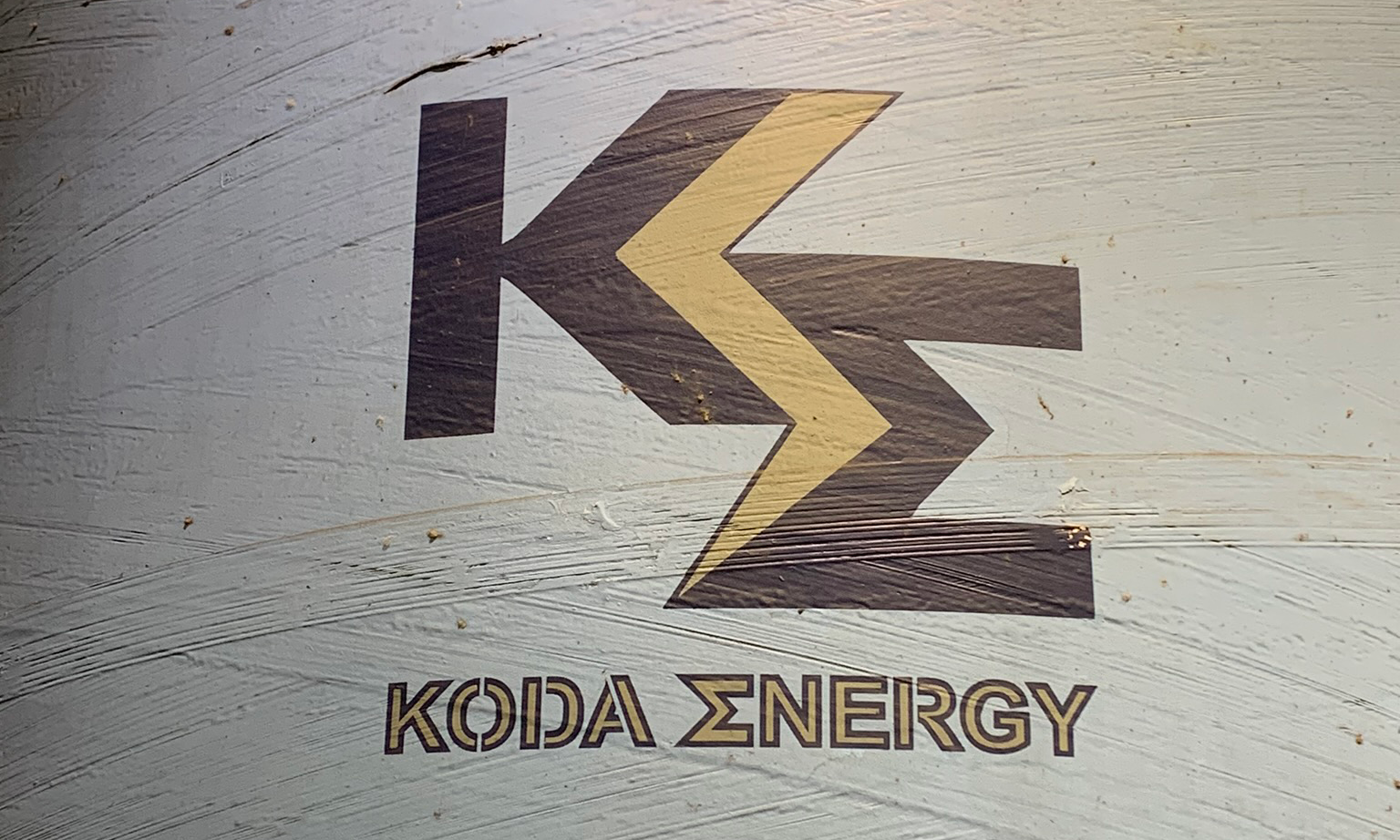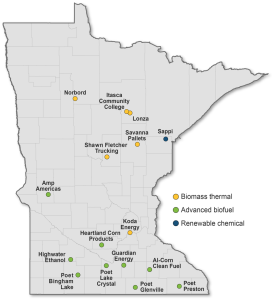Minnesota Bioeconomy Incentive profile: Koda Energy converts waste to heat, power
April 26, 2023 | Susanne Retka Schill | Policy

Small and large businesses across rural Minnesota contribute to the state’s bioeconomy, providing jobs and economic activity in the communities they serve—a primary goal of the Minnesota Bioincentive Program.
With the 2023 legislative session underway, the Bioeconomy Coalition of Minnesota continues its effort to help stakeholders understand the importance and potential of the Minnesota Bioincentive Program. The performance-based incentive program is designed to attract investments to the state in advanced biofuels, renewable chemicals, and biomass thermal energy.
In order to receive the incentive, companies must fund and build a project and produce eligible products. However, over the past four years, projects have not been fully paid for their eligible incentive claims due to inadequate funding allocated to the program by the Minnesota Legislature. To inform policy makers and stakeholders on the beneficial impact of a fully funded program, we have profiled several of the companies in previous posts:
- Amp Americas in Morris
- Guardian Energy in Janesville
- Sappi in Cloquet
- Savanna Pallets in McGregor
- Itasca Community College in Grand Rapids
Figure 1. Minnesota Bioincentive Program recipients by sector

Elizabeth Abramson, Horizon Climate Group, LLC, created for the Bioeconomy Coalition of Minnesota in March 2023 based on information emailed to Great Plains Institute staff from the Minnesota Department of Agriculture, February 13, 2023. Originally published in the Minnesota Bioincentive Program Reimbursements fact sheet.
For Koda Energy in Shakopee, Minnesota, the Bioincentive Program helped justify the expansion of its biomass thermal capacity, explains Stacy Cook, president. Since 2009, Koda Energy has generated electricity and heat from waste biomass for its parent company next door, Rahr Malting. Rahr subsequently added a sixth malt house and eighth kiln to expand its malt production but built the expansion with two natural gas heating units because Koda Energy’s capacity was maxed out.
While the existing capacity at Koda Energy did not qualify for the Bioincentive Program, their expanded thermal capacity did because it was re-powering a fossil fuel system.
“We added boiler feed water pumps so we could feed the boiler a higher rate of water because if you need more steam, you need more water,” Cook says. “We also added piping and electrical gear.”
The system now replaces about 90 million cubic feet of natural gas each month, an increase of 20 million cubic feet of natural gas equivalent.
Koda Energy’s unit first generates 23.4 megawatts of electrical power for Rahr’s operations, with excess power sold to the grid. The remaining thermal energy heats a glycol solution that is piped over to Rahr to power the malt kilns, where the germination process in barley is quickly halted with heat, and the malted kernels lightly roasted.
Koda Energy combusts an array of waste biomass—oat hulls and chaff from General Mills’ oat flour plant in Fridley, barley hulls and chaff from Rahr Malting next door, unusable broken boards from pallets and crates being fixed up for reuse, and diseased and undesirable wood species being cleared as part of Crow Wing County’s forest management program.
“Utilizing biomass waste benefits the local economy and the environment,” Cook says. “Oftentimes, waste byproducts end up in landfills and, through decomposition, potentially become methane in the atmosphere, which is a worse greenhouse gas than carbon dioxide. Without the Bioincentive Program, some companies would not make the investment to increase their utilization of biomass and help solve that problem.”
“Incentives for biomass thermal could aid smaller companies,” Cook adds. “More smaller companies are going to be able to participate in biomass thermal because they don’t have to build a huge production facility. They can start heating a business with a small combustor and contribute to the solution that the bioincentive is bringing to society, which is the utilization of these resources for the benefit for all.”
“The benefits go beyond the individual participating companies,” Cook says. “Every step along the way is providing employment opportunities for people. It’s providing revenue for different business units in the state of Minnesota, and every time the biomass is touched, that’s employment for somebody,” he says.
Return on Investment
Wanting to understand just how much of an impact the Minnesota Bioincentive Program would have in the state, the Great Plains Institute commissioned a study conducted by Brigid Tuck, senior economic impact analyst in the Center for Community Vitality at the University of Minnesota Extension. She published an analysis of the program’s impact in 2020.
In addition to construction phase impacts, the study found that the 12 participating companies spent $67.5 million on operational expenses in 2019 and $75.3 million on labor, providing 1,320 jobs. In total, the 12 bio-based industrial production facilities generated a total direct output of $438.8 million.
In addition to the direct economic contribution, the study modeled the indirect impacts related to inputs and the induced economic impacts related to employee spending. The study found a total of 2,415 jobs generated $127 million in labor income and $610.7 million in economic activity from the 12 participants annually.
The state’s return on investment from those 12 participants is significant and would be even more significant if companies received their full claims.
According to the Minnesota Department of Agriculture’s report dated January 2022, applicant claims in fiscal year 2021 amounted to $6.3 million, which exceeded the funding available by $3.8 million. “Claims for FY22 will also likely exceed the $4.5 million in funding available for the fiscal year. For the first quarter, $2,455,972 in claims were reimbursed,” the report found.
Author: Susanne Retka Schill is a Langdon, North Dakota, based freelance writer. Now semi-retired, she has nearly two decades of experience writing about biofuels and renewable energy.
Additional Information
Download our fact sheet for additional information regarding the Minnesota Bioincentive Program reimbursements.
Interested in supporting our effort to fully fund the Minnesota Bioincentive Program? Sign up for action alerts.
